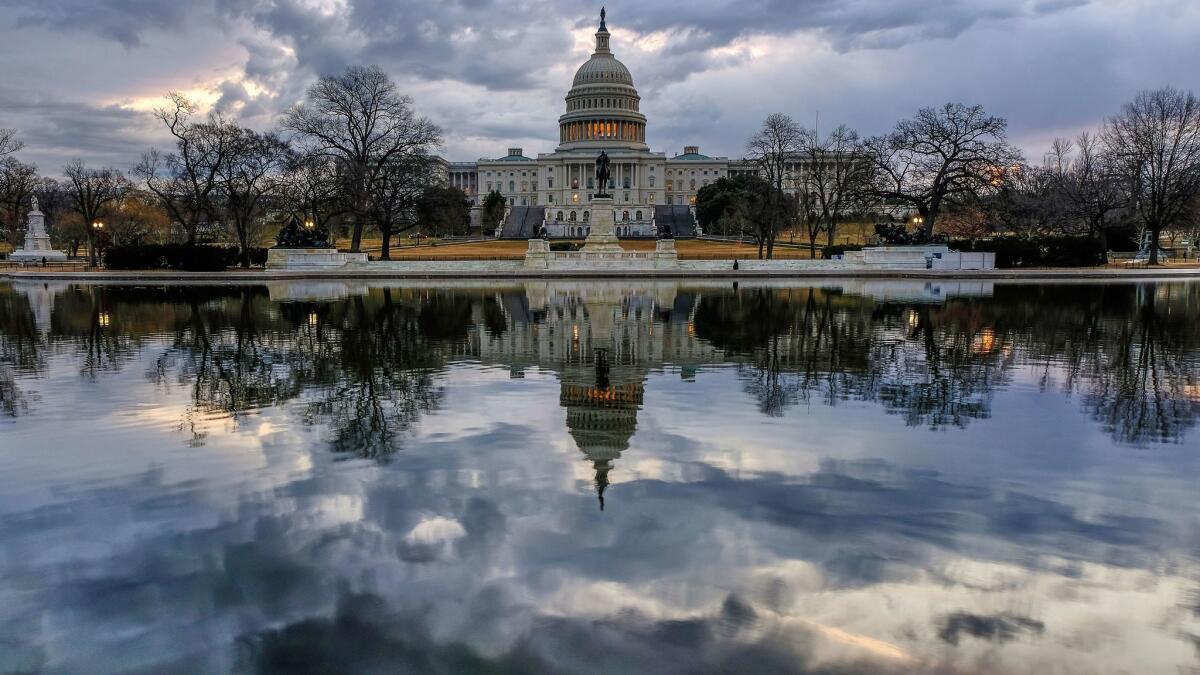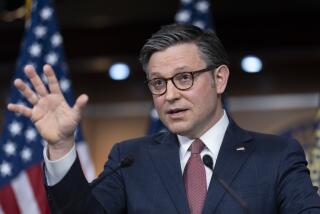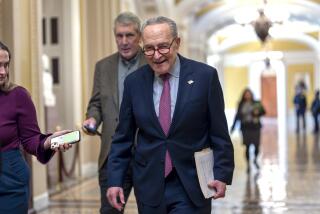U.S. government deal to end shutdown eases some confusion about work and recreation

When Abner Merriweather, an electrical engineer at Redstone Arsenal, a U.S. Army post near Huntsville, Ala., arrived at work Monday morning, he found chaos. Everywhere he looked, co-workers were asking what to do.
“Should I go home or stay?” they asked supervisors as Congress struggled to make headway in ending the government shutdown.
“Supervisors are not telling them anything,” said Merriweather, who serves as president of the American Federation of Government Employees Local 1858. “Never in my 35 years of federal service have I seen this level of dysfunction. Absolutely no direction. No guidance.”
A few hours later, the mess did not seem quite so bad: Senate leaders in Washington announced they had reached an agreement to pass a stopgap spending bill and commit to tackle the issue of immigration.
Hundreds of thousands of federal employees who had faced the prospect of unpaid furloughs after funding for the government expired Saturday instead got a reprieve. After President Trump signed the compromise bill Monday night, most employees were advised to return to work Tuesday.
“We feel a little relieved,” Merriweather said shortly after the Senate announcement. “We had been facing complete uncertainty.”
Although workers across the country welcomed the end of the shutdown, they still had some worries. It was unclear whether pay would be provided to federal employees who did not get to work over the last three days. And with grave uncertainty over whether Congress could eventually agree on immigration, many were nervous about the possibility of yet another shutdown in a few weeks.
“I don’t take anything for granted,” said Jessica Klement, staff vice president of the National Active and Retired Federal Employees Assn., which represents about 20,000 workers. “I don’t think anything is certain until it is.”
Federal workers whose work had been deemed essential — such as air traffic controllers, active-duty military personnel, Border Patrol agents and U.S. attorneys — had continued to work without having to worry about when they would be paid.
Millions of Americans had braced for inconvenience as federal agencies rolled back their nonessential services over the weekend. Without a deal, passport and visa applications would go unprocessed. The Internal Revenue Service would stop issuing tax refunds and conducting audits. The Occupational Safety and Health Administration would suspend the majority of routine workplace safety inspections.
Telephone calls were not answered Monday morning at the White House. “We apologize, but due to the lapse of federal funding, we are unable to take your call,” a recorded message said. “Once funding has been restored, our operations will resume.”
Although the shutdown was not as long as in 2013 — when 850,000 federal workers were furloughed for 16 days — many union officials said communication with employees was handled more deftly five years ago.
In 2013, military and civilian leaders at Redstone met with union officials days before the government closed down and employees received about two weeks’ notice, Merriweather said. This year, employees were not notified in advance. Many did not receive an email until Sunday, when they were off work.
“We all were all left in the dark,” Merriweather said. “We were on a ship with no captain.”
Essential Washington: Full coverage of the shutdown »
Even before the workweek started, the shutdown’s impact could already be glimpsed at national parks across the nation.
All park programs were canceled over the weekend at Yosemite, Death Valley and Joshua Tree national parks in California.
In Philadelphia, security guards warned tourists they could not enter Independence Hall, where the Declaration of Independence and Constitution were both signed. In Atlanta, visitors to the Martin Luther King Jr. National Historical Park could not enter the slain civil rights leader’s childhood home or the historic Ebenezer Baptist Church, where he delivered his first and last sermons.
But by Monday morning, some historical landmarks had already returned to normality.
In New York, crowds returned to the Statue of Liberty and Ellis Island after Gov. Andrew Cuomo reached a deal with the federal government to keep the tourist attractions open.
“Ever since I was little, the lady with the torch has symbolized everything about this country,” Anne Vetrano, 59, of Rosedale, Miss., murmured as she walked toward the Statue of Liberty.
Vetrano, who was on her honeymoon with her husband, Bill, said the government’s actions upset her, “and that’s putting it mildly.”
“When the government decides to shut things down, you’re affecting people’s lives and livelihood,” she said.
Special correspondent Jarvie reported from Atlanta. Times staff writers Louis Sahagun in Los Angeles, Nina Agrawal in New York and Molly Hennessy-Fiske in Houston contributed to this report.
UPDATES:
6:30 p.m.: The article was updated with news that President Trump has signed the compromise funding bill.
2:00 p.m.: This article was updated throughout with reaction to legislators saying they had agreed to reopen the government.
11:10 a.m.: This article was updated to include Senate leaders saying they had reached an agreement to end the three-day government shutdown.
This article was originally published at 7:05 a.m.
More to Read
Start your day right
Sign up for Essential California for news, features and recommendations from the L.A. Times and beyond in your inbox six days a week.
You may occasionally receive promotional content from the Los Angeles Times.







